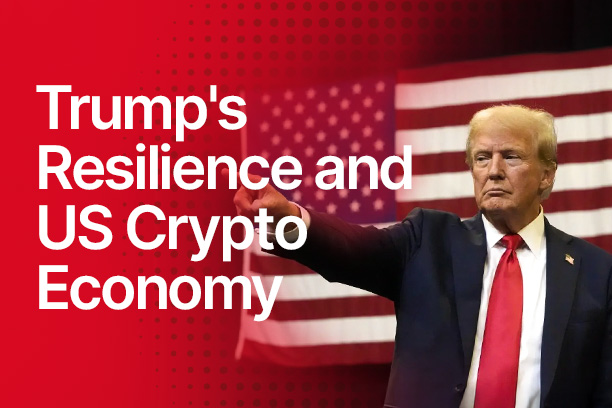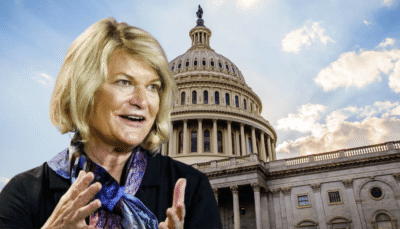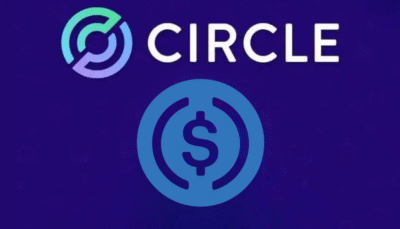Donald Trump’s approach to economic policy is not just influential—it’s transformational. A single comment from the former president is enough to send crypto markets swinging by thousands of dollars.
On The CoinRock Show, host Matthias described how Trump’s recent easing of rhetoric around tariffs helped push Bitcoin from $82,000 to $88,000 in one day. That kind of impact underscores Trump’s continued grip on the financial psyche of markets, even outside of office.
In today’s macroeconomic environment, Trump is not a bystander. His influence over the Federal Reserve and broader economic direction appears increasingly deliberate. On March 25, he publicly pushed for lower interest rates.
The commentary from the show framed this not as mere posturing but as strategic pressure. This sustained, high-intensity approach is designed to break the Fed’s posture. And the strategy may already be working.
There is a clear link between Trump’s pressure tactics and policymaking. Whether it’s tariffs, rate policy, or public statements, Trump is using every lever to steer the macroeconomic narrative. The goal isn’t subtle. It’s to force outcomes by forcing reactions. If the Fed buckles, it will be under the weight of precisely this kind of pressure.
Trump’s Macro Playbook
Three specific variables define Trump’s current influence: tariffs, quantitative tightening (QT), and interest rates. He is pushing simultaneously on all three. That coordination is not accidental. It’s targeted.
Tariffs, in particular, have returned to the center of financial discussion. Trump has recently softened his stance—a move that appears more than just rhetorical. It’s a test. The market’s immediate reaction to the shift—Bitcoin jumping by $6,000—is a data point that can’t be ignored.
April 2 may offer clarity on whether Trump’s tariff repositioning is temporary, strategic, or the beginning of a larger policy reversal. Markets are already pricing in the possibility. But the deeper implication is psychological: Trump’s statements alone are now treated as policy signals.
The same goes for interest rates. When Trump called for lower rates on social media, it wasn’t just noise. It came across as part of a coordinated campaign to push monetary policy in a direction that benefits risk assets—including crypto. The Fed’s supposed independence is under pressure. Institutions are run by people—and people, under enough stress, break.
Why Resilience Wins
In Matthias’ view, the core of Trump’s strategy lies in his resilience. He has consistently shown the ability to operate under extreme pressure—and use it to his advantage. Matthias often draws comparisons between political pressure and athletic competition. Like an athlete in a high-stakes match, Trump thrives under stress.
The July 2024 assassination attempt during a campaign rally solidified that image. At 78, Trump stood up, physically wounded, and repeated the word “fight.” It was a message to markets, adversaries, and allies alike: Trump will not fold. That resilience may be as impactful as any formal policy.
The crypto sector offers parallel examples. After a $1.4 billion exploit, Bybit’s CEO addressed the issue head-on, going live to confront it directly. In both politics and finance, the leaders who show up under pressure define the cycle. Trump fits that mold.
The Institutional Shift Is Real
On the show, guest Mati Greenspan emphasized that the current cycle is fundamentally different from past bull runs.
“This is the first crypto cycle not accompanied by massive money printing,”
Greenspan said.
Greenspan believes the market is finally shifting away from hype and returning to fundamentals like value creation, utility, and long-term adoption.
He also pointed out that traditional finance has finally caught up to the crypto space.
“The biggest influencer of the price of Bitcoin used to be the Federal Reserve But now we’re seeing deregulation, institutional involvement, and innovation on an unprecedented scale.”
– Greenspan
Matthias agrees—but adds a crucial point. This shift is being driven by some of the largest institutional players in the world. BlackRock, Fidelity, and others are entering the space with force. This is no longer the domain of web3-native hedge funds making niche bets. This is trillion-dollar capital, moving strategically.
States like Arizona, Kentucky, and Oklahoma have passed or advanced Bitcoin reserve legislation. Matthias points out that this was once a dream scenario for the industry. Now it’s happening—rapidly.
Trump’s indirect influence is crucial here. By signaling deregulation and softening protectionist stances, he’s encouraging these players to move. Institutions respond to policy signals, not just price action. Trump provides both.
Leadership in a Sentiment-Driven Market
At the heart of Matthias’ thesis is a belief that leadership matters more than ever. Markets are not just responding to news—they are reacting to posture, to tone, to the display of strength or weakness. Trump’s ability to dictate sentiment, even without formal power, is unparalleled.
In the current crypto environment—still recovering from regulatory uncertainty and reputational damage—strong leadership is in short supply. Trump’s aggressive communication style and his demonstrated ability to shape the narrative are filling that void. Whether he intends to or not, he is becoming a reference point for resilience, risk, and conviction.
The CoinRock Show posed a central question: Who blinks first—the Fed or Trump? Based on what’s playing out in the market, the answer seems increasingly clear.
Trump is not just a political actor. He is an economic variable. His resilience, in word and action, is shaping expectations, strategies, and ultimately, outcomes.
In crypto, where perception often shapes reality, resilience could be the most important signal of all.





